
Today, we are going to learn how to write a Primary 2 composition, specifically the middle paragraph which is also known as the body paragraph.
Young writers typically have some issues with going beyond the pictures to write a complete story.
To better understand how to write the body paragraph, we are going to use the following 4-picture composition topic to illustrate how to do so.
Two self-questions to write the body paragraph
For young writers, the learning process should be kept simple for their easier learning.
To teach children to visualise and write the story in a step-by-step manner, we use the following questions:
- What comes next?
- Can I say more?
Using the following picture composition topic, we will illustrate how the 2 questions can be used to write the body paragraphs.
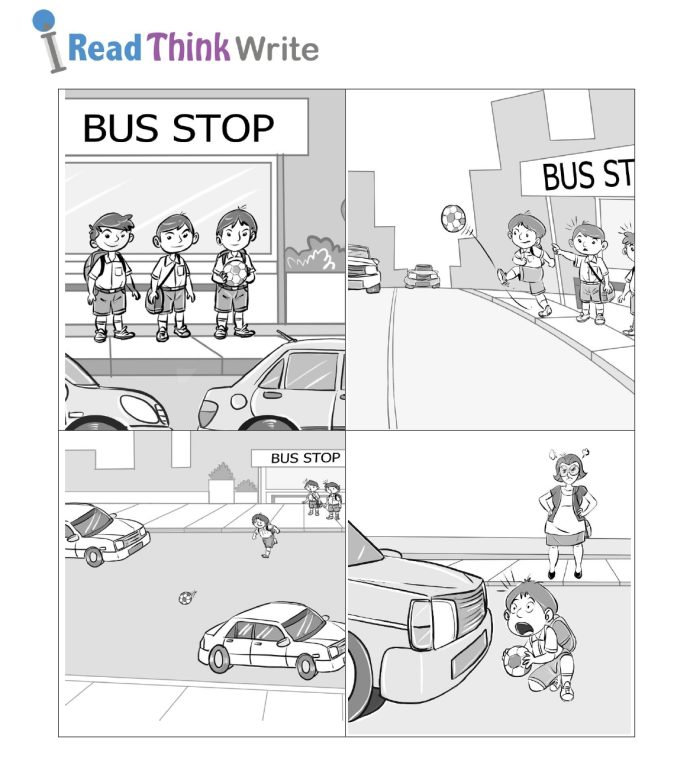
Writing the body paragraphs (1)
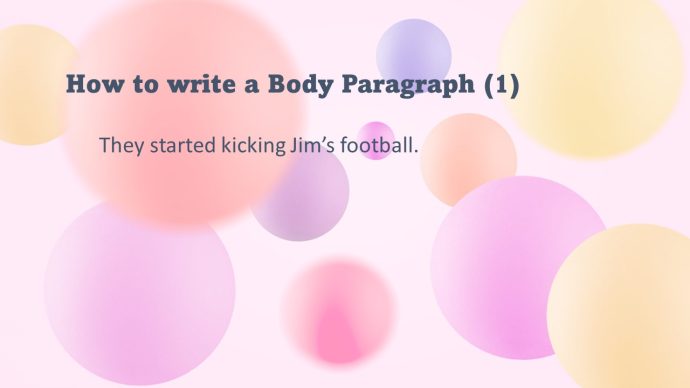
Let’s examine the above picture topic.
To write the body paragraph, the focus is on Picture 2 and 3.
However, to start the body paragraph, we should consider what happened just before Picture 2. Thius means pupils should imagine what happened between Picture 1 and 2.
It is logical to assume that all three boys were playing with the ball prior to the scene in Picture 2.
Writing the body paragraphs (2)
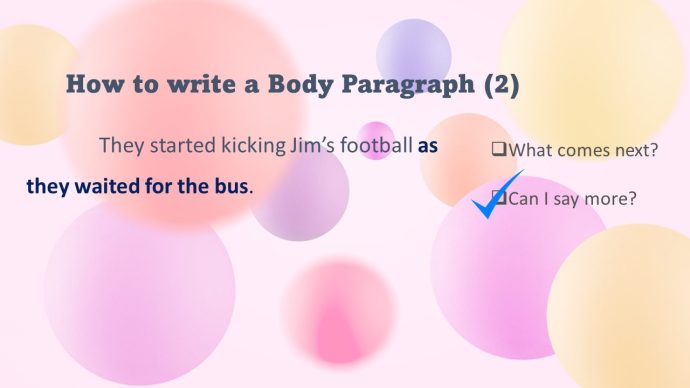
Teaching notes
We can use “Can i say more?” to write more about what the boys were doing as they were kicking Jim’s football.
Since they were at the bus stop, it is logical to assume that they were kicking the football and waiting for the bus too.
Since the boys were kicking and waiting at the same time, students are encouraged to use conjunctions such as “as” to combine the actions.
Writing the body paragraphs (3)
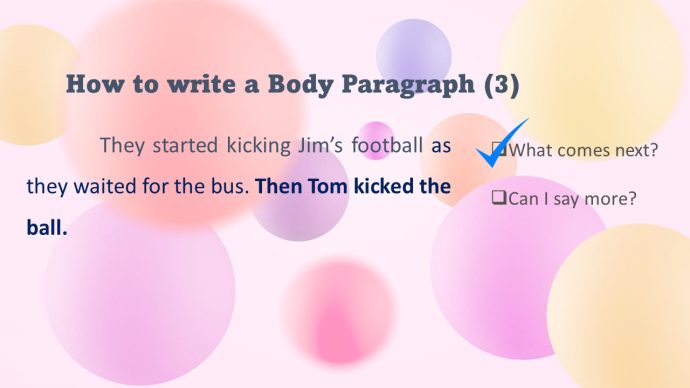
Teaching notes
Pupils should imagine what happened next.
This is clearly shown in Picture 2 as one boy kicked the ball hard.
Sequencing words such as “then” can be used to depict the next action.
Writing the body paragraphs (4)
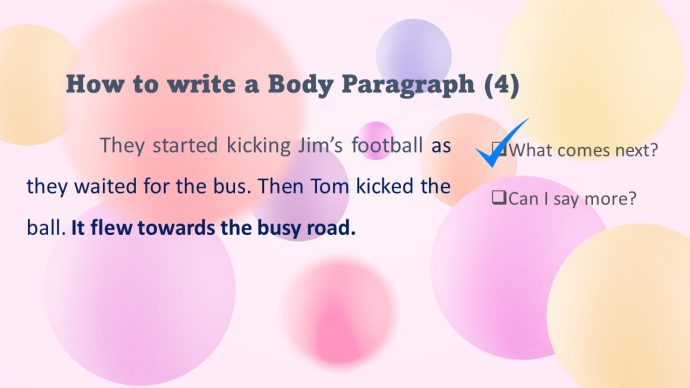
Teaching notes
Imagine what comes next after Tom kicked the ball.
Since the boys were standing beside the busy road, it is logical to assume the ball flew towards the road.
Writing the body paragraphs (5)
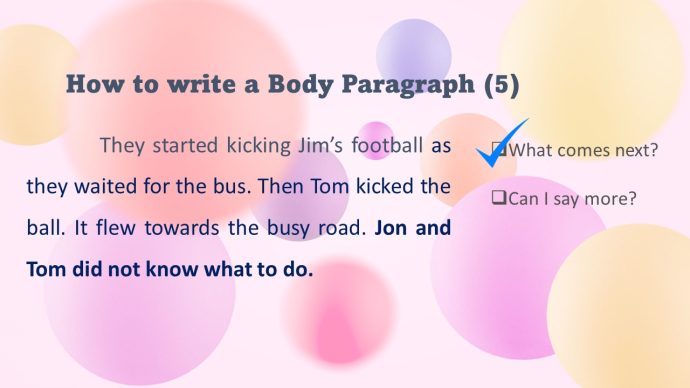
Teaching notes
Since the ball flew towards the busy road, what did the boys do?
It is logical to assume that it was difficult to retrieve the ball with the car zooming past so the boys did not know what to do.
Writing the body paragraphs (6)

Writing the body paragraphs (7)
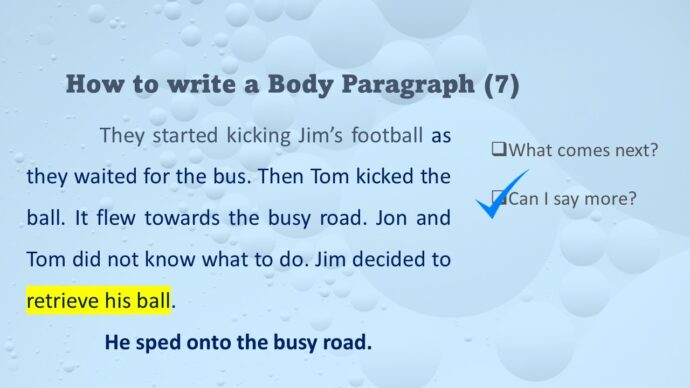
Teaching notes
To say more, students will have to identify the keyword or phrase. In this case, saying more on “get his ball back” will mean elaborating on what exactly the character did to do so.
Advanced writers can also improve their vocabulary by replacing common verbs such as “ran”.
Most students will use “sped across” rather than “onto”. However, it is important to stop and think if the action makes sense – Is it possible at all to run across a busy road with cars speeding past?
Writing the body paragraphs (8)
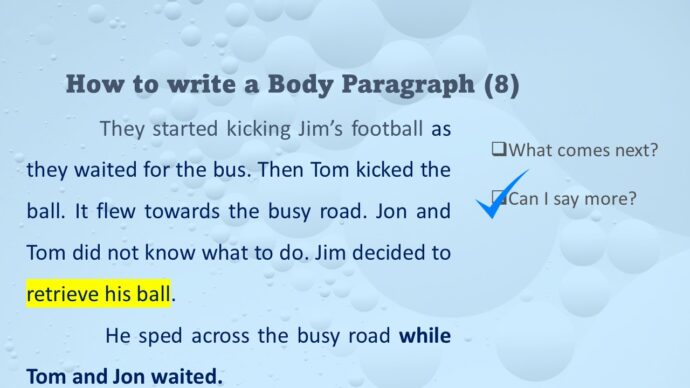
Additional comments
Bearing in mind that other than the main character (Max), there are two other boys, students can “say more” on the other two boys’ actions.
Conjunctions such as ‘while’ can be used to connect actions which are happening at the same time.
Writing the body paragraphs (9)
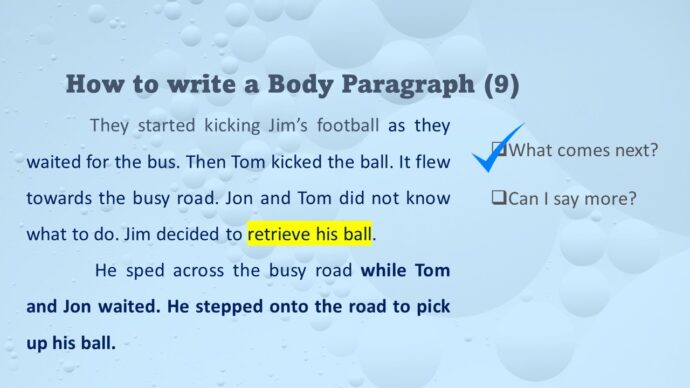
Writing the body paragraphs (10)
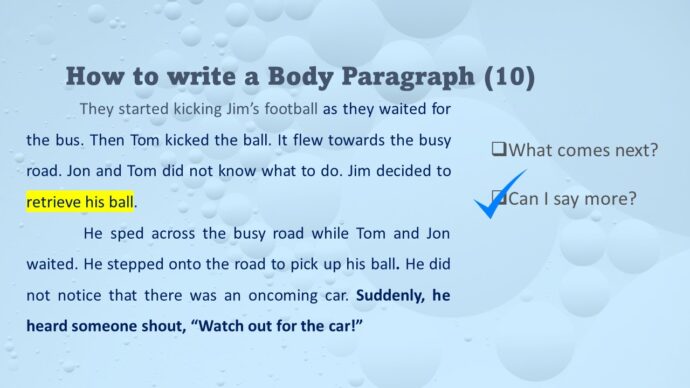
Additional comments
We use sentence starters such as “Suddenly” to show actions that happen quickly and unexpectedly.
Advanced writers can make use of dialogue.
Young writers should keep the dialogue simple. This means to keep the speech short and simple.
The key is to focus on the right moment to insert the dialogue (example: critical moments like the above)
Writing the body paragraphs (11)
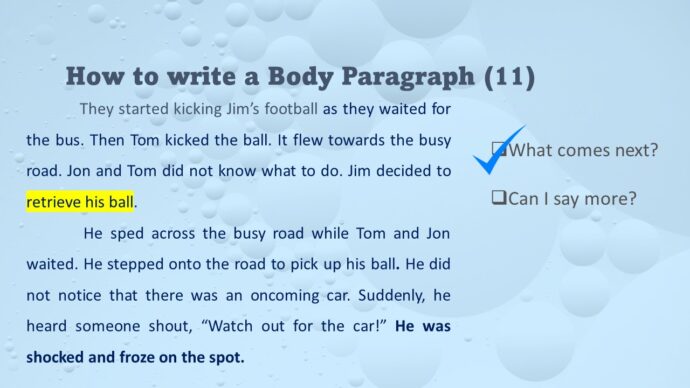
Writing the body paragraphs (12)
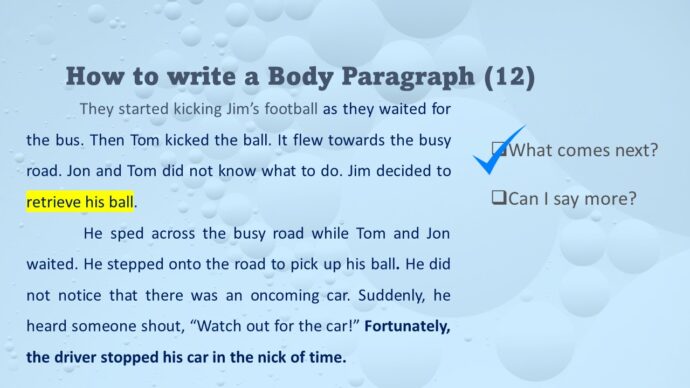
This is the complete body paragraph written sentence by sentence.
Using such a step-by-step teaching method makes for easier understanding especially for young writers.
Join us for our Primary 2 English and Writing classes which cover writing in detail for every lesson.
For more information , Whatsapp us at 87873371 or email us at admin@creativelearning.com.sg



